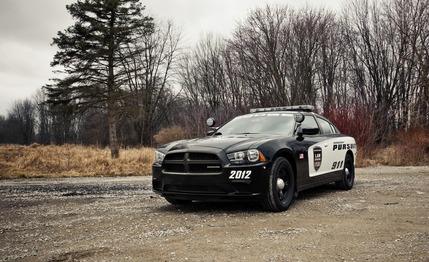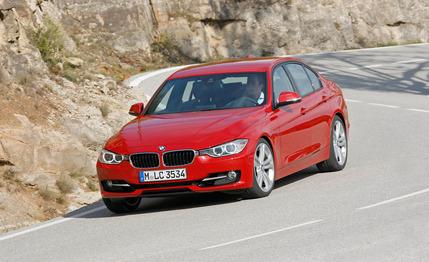
 Instrumented Test
Instrumented Test


Driving a police-spec Charger as a civilian isn’t so much about the car as the experience. That’s because it feels and performs like a regular model—we’ve reviewed those in many forms—save for one major distinction: Its performance is almost entirely dictated by its appearance, not the beefed-up chassis or the burly 5.7-liter V-8. You might go faster than normal traffic or slower than normal traffic—but generally, it’s the traffic that decides, one way or another.
If Looks Could Grille
Our Patrol Package #1 test car wore white-over-black graphics, a light bar, A-pillar spot lamps, and black steelies. Any one of those elements is enough to put other drivers on red alert, but together they’re downright intimidating—enough so that most motorists didn’t bother to read the Dodge Law Enforcement marketing-message shields on the doors or take in the huge Dodge windshield banner. The getup was so believable, in fact, that one actual officer of the law gave us a wave as we passed. In his defense, we were traveling in the opposite direction at about 55 mph on a two-lane. Still, we’re assuming he wasn’t a detective.
The kids working the Tim Hortons drive-through gave the car a second look, though, peeking their heads out the window after we ordered. They might have been deciding whether to ready freebies, but they correctly figured us for fakes, and we shelled out 80 cents for our glazed sour-cream doughnut.


Wall of Cars
A fake power trip in a Hemi-packing Charger cop car taught us several lessons in motorist psychology as it relates to traffic impedance and reactions to police presence. We could have actively messed with people, but we didn’t. Too much. And not really on purpose.
In thicker highway traffic, approaching a group of cars from behind causes a rolling, sub-70-mph blockade to form instantly. Slip by somehow, and no one passes you, regardless of how fast or slow you’re setting the pace. It’s a strange feeling to drive down an interstate leading a four-abreast wall of traffic like some sort of pied police piper.
It happens in low-traffic situations, too. In one instance, we were trundling along in the right lane at about 70 with cruise engaged when someone in the left lane came barreling up on us. Clearly recognizing the livery—but not noticing that it wasn’t real—the fellow dove in behind us and matched his speed to ours. We formed a two-car convoy just like that until he exited 15 miles later.